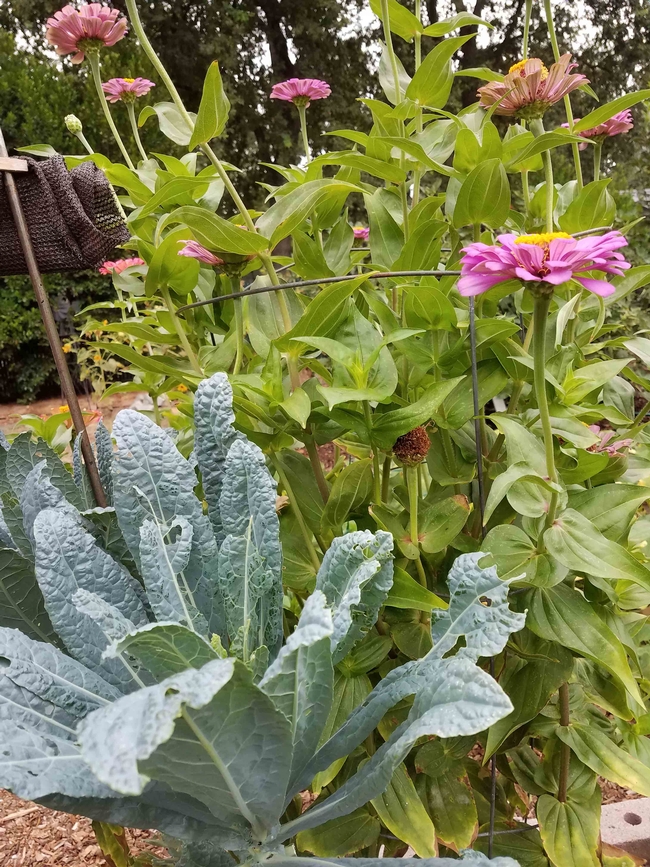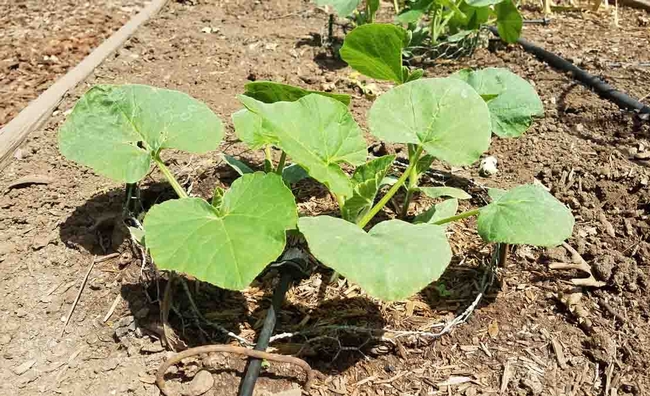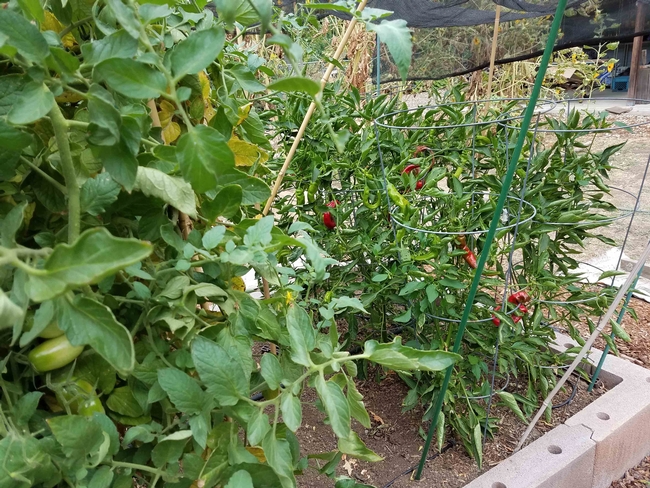Cool season plants like a warm start, so it's not too early to begin adding some of them to the vegetable garden now. In this way you can extend the harvest of both warm season crops and cool season veggies.

In mid to late August, many warm season vegetable seeds will still have sufficient growing days to reach maturity. To figure out which vegetables can be planted now, look at the “days to maturity” on the back of the seed packet and count back from your region's first frost date. Chico has a 10 percent risk of frost by October 29, and a 50 percent risk of frost by November 14. This gives the gardener at least 60 to 75 days before frost, which is enough time to grow a new batch of cucumbers, a second round of summer squash, and some varieties of lettuce and Asian greens.
Many fall crops survive a bit of chill. The date to plant out frost-tolerant transplants like kale, chard, broccoli, Brussels sprouts, and cauliflower is somewhat flexible. Broccoli, Brussels sprouts, and cauliflower are best started indoors or purchased as transplants.
But what to do about all the plants already growing in the beds? This is where the magic begins. Previously it was believed by many that plants compete with one another for nutrients and water. The planting bed had to be denuded of the early crop and maybe even left fallow for a time before replanting in that space. Newer research shows that plants grow better when a variety of other plants grow nearby. Dr. Christina Jones, a soil ecologist from Australia who speaks at regenerative agriculture forums throughout the world says, “Every plant exudes its own unique blend of sugars, enzymes, phenols, amino acids, nucleic acids, auxins, gibberellins and other biological compounds….The greater the diversity of plants, the greater the diversity of microbes and the more robust the soil ecosystem.” These various soil microbes bring nutrients to the plant in exchange for sugars discharged by the roots. The wider array of available nutrients from a diverse group of plants increases an individual plant's ability to fight off diseases and pests, and increases the nutrient density of the plant. Basically, the plant grows better and is ultimately more nutritious when consumed. This diversity can be achieved by employing a combination of succession planting and “No Till” gardening techniques.
There are several approaches to succession planting.
- A crop can be seeded in the place where another plant was harvested.
- The next crop can be planted among the existing crop (intercropping). This has advantages in August since the foliage from older plants can offer sun protection to tender seedlings.
- Several compatible plants can be planted together (companion planting).
- The same crop can be seeded at different time intervals for continuous, smaller harvests (successive plantings).

Rather than pull out existing veggies when they are dying off, cut them down at ground level. Immediately add some compost. Poke a hole the depth recommended for the seed you are planting. Drop seed into the hole. Pull the soil back over the seed and keep watered. Cover lightly with straw, grass clippings, or other mulch. Wait until the new plants are developing before adding a thicker coating of mulch.

Succession planting and starting cool season vegetables early will extend the harvest, but remember that it is hot and new plants dry out quickly. Water more frequently until your fall garden is established.
Approximate Frost Dates in California
Vegetable Planting Guides for our area:
Chico Valley Area Planting Guide
You can find some of Dr. Christine Jones's talks on soil health here.
Well worth reading is Gabe Brown, Dirt to Soil: One Family's Journey into Regenerative Agriculture, Chelsea Green Publishing, 2018.
The Master Gardeners' Fall Workshop Series begins on August 28th with the first of a two-parter on home canning and preserving. All workshops are free, but they do require advance registration. For descriptions of all sixteen workshops and to register, visit our website.
UC Master Gardeners of Butte County are part of the University of California Cooperative Extension (UCCE) system. To learn more about us and our upcoming events, and for help with gardening in our area visit our website. If you have a gardening question or problem, email the Hotline at mgbutte@ucanr.edu or leave a phone message on our Hotline at 530-552-5812. To speak to a Master Gardener about a gardening issue, or to drop by the MG office during Hotline hours, see the most current information on our Ask Us section of our website.